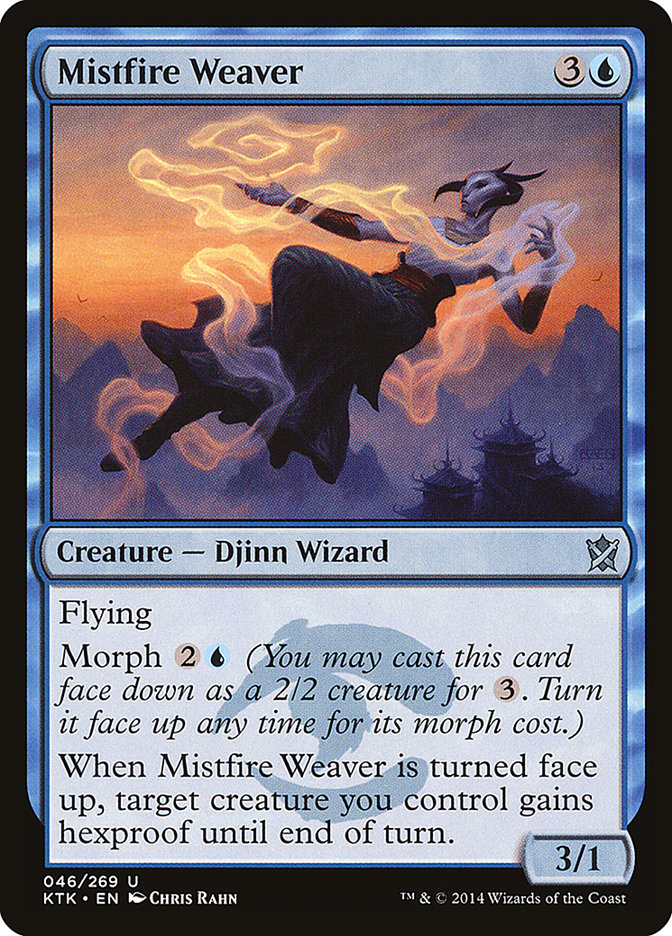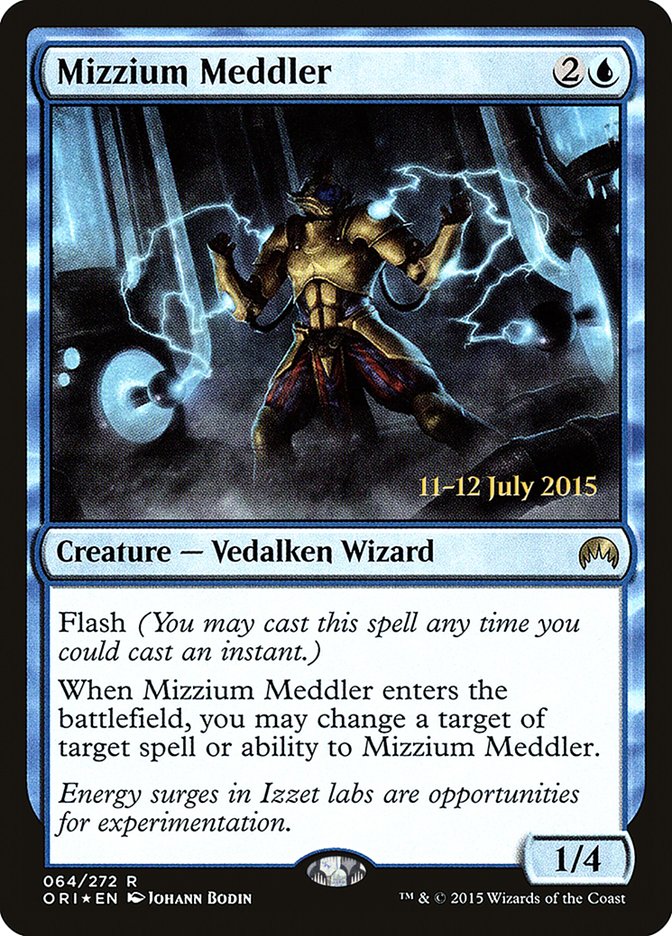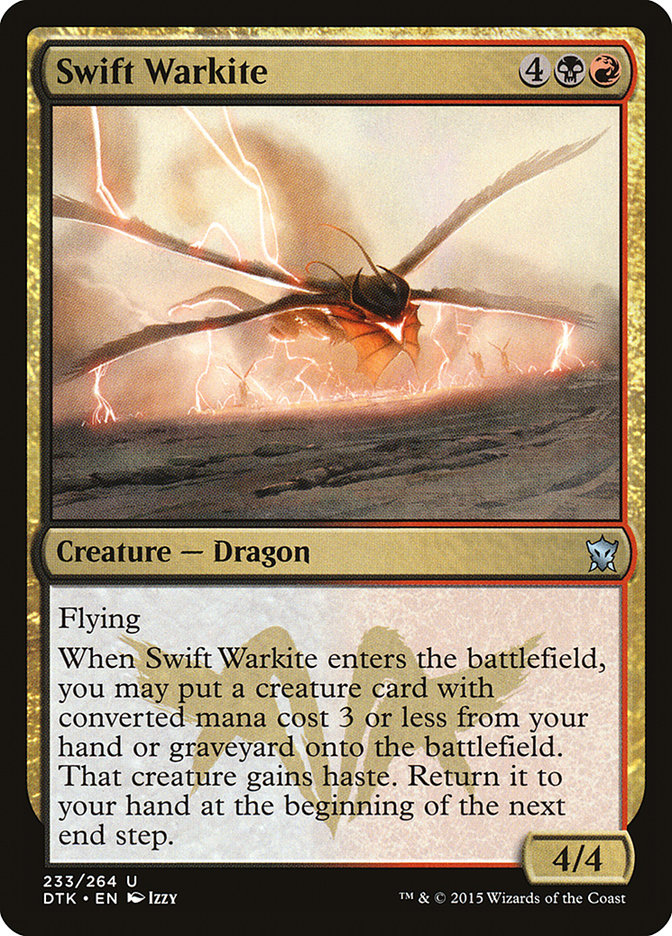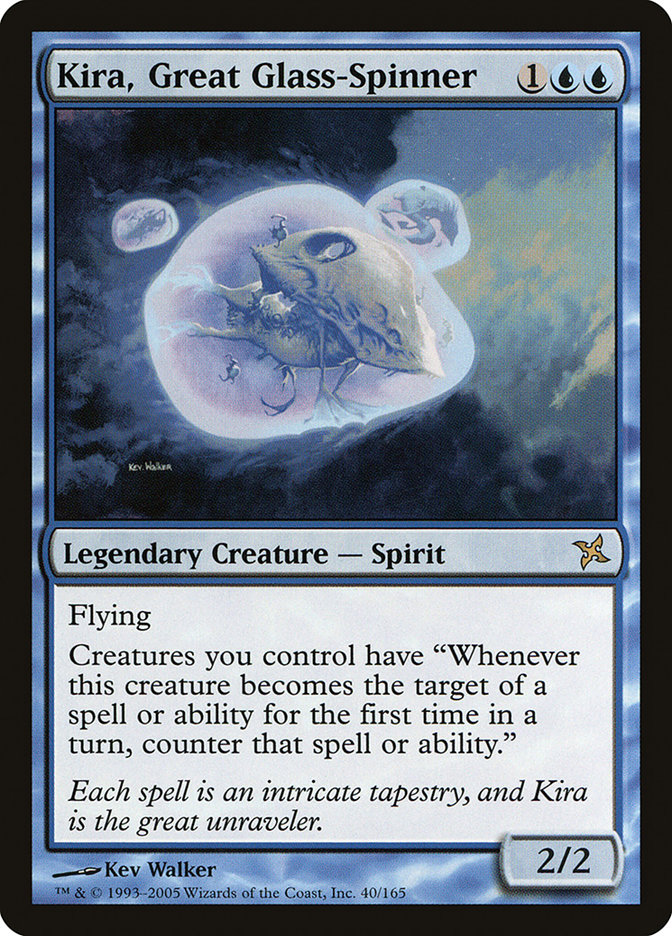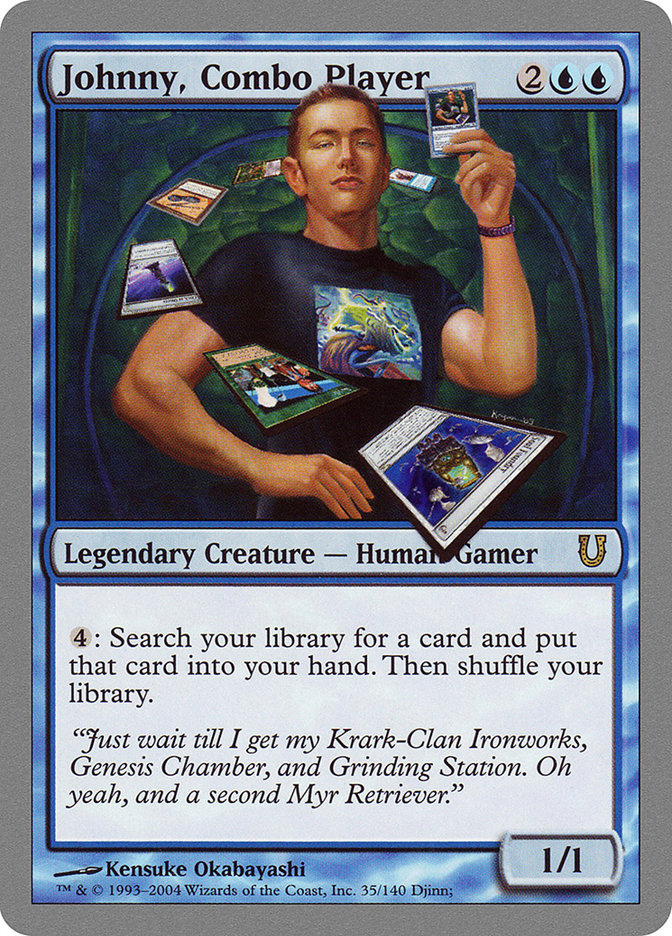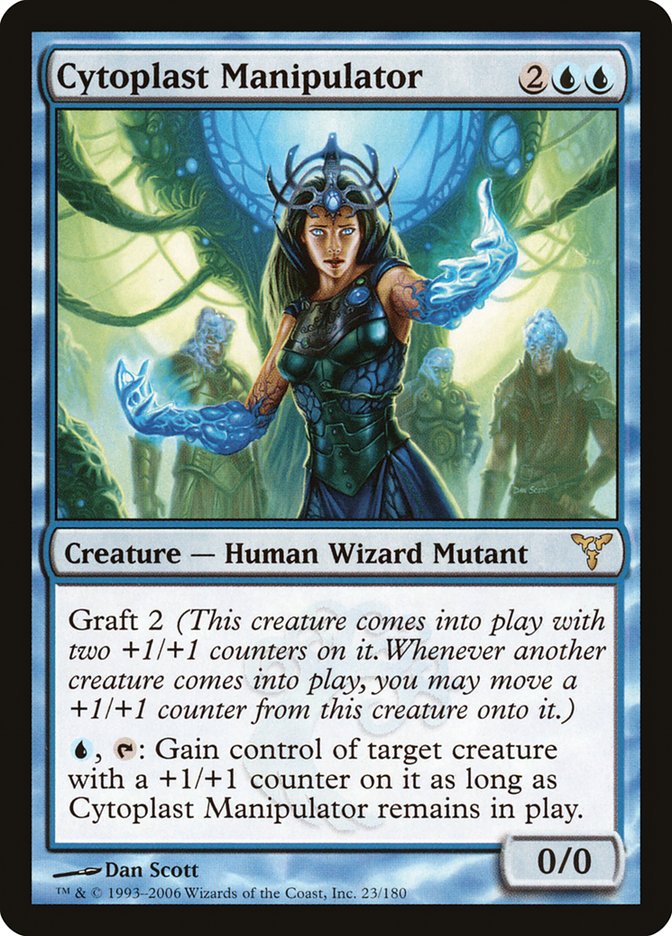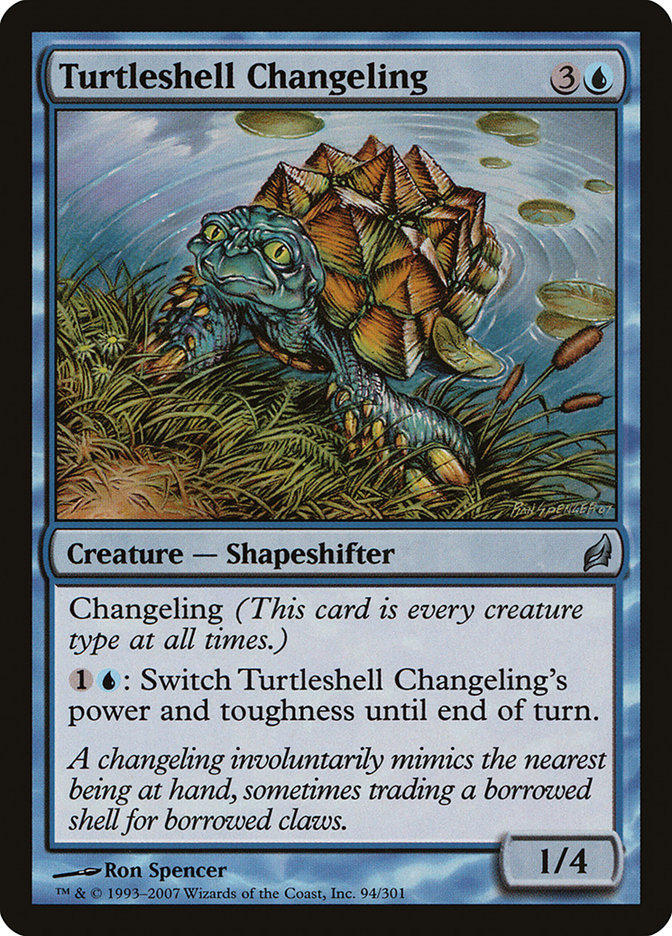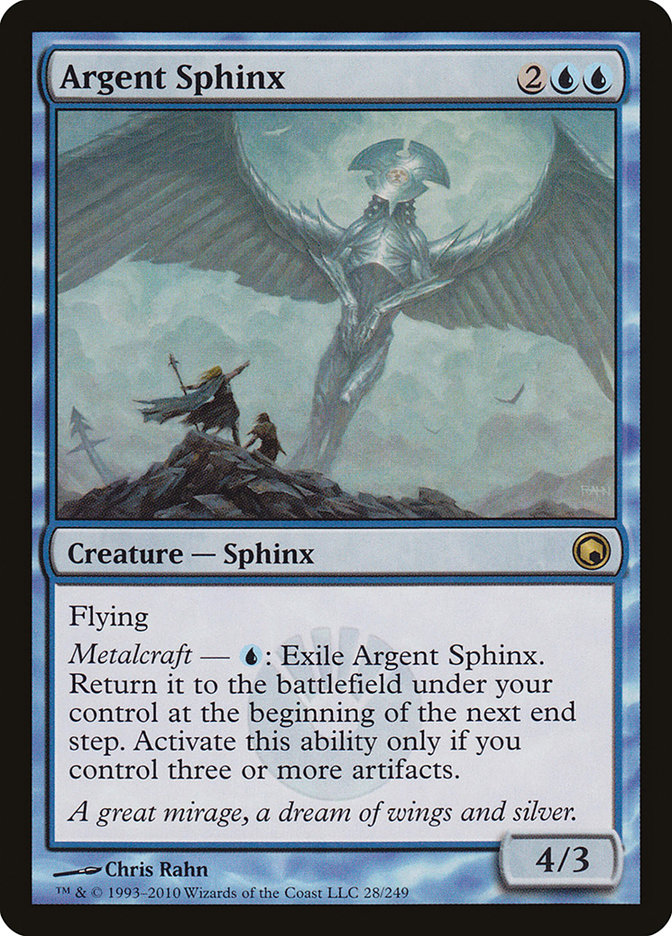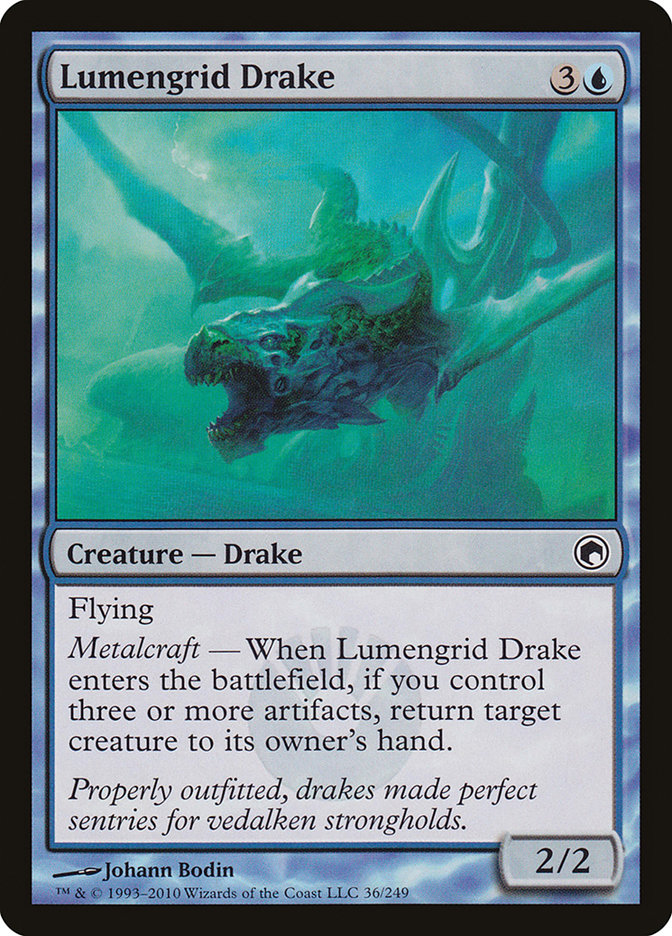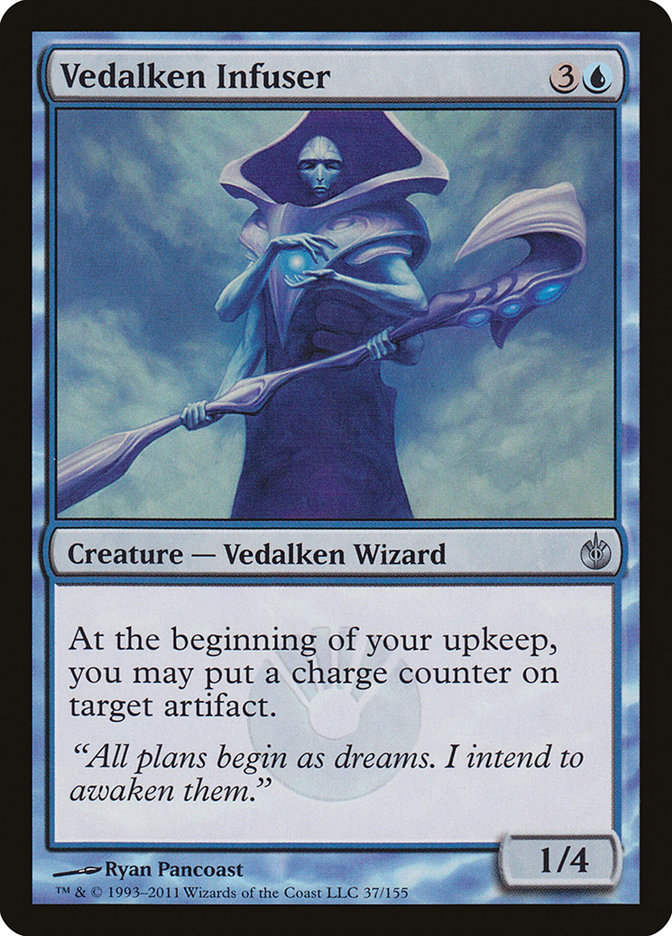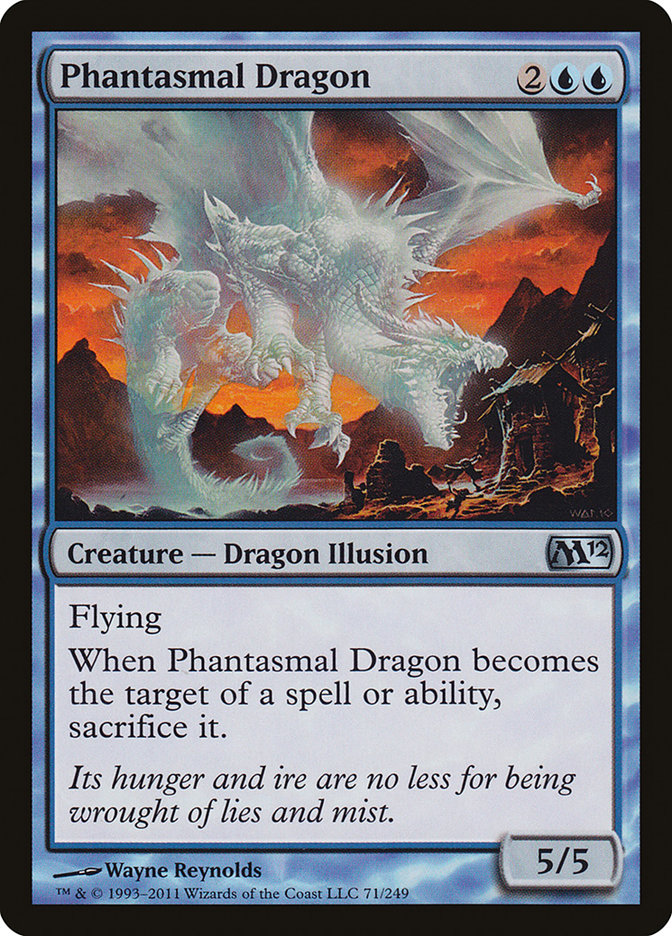Tejedora nieblardiente Carta MTG
| El coste de maná | |
| Costo de maná convertido | 4 |
| Rareza | Poco común |
| Tipo | Criatura — Hechicero djinn |
| Habilidades | Flying,Morph |
| Liberado | 2014-09-26 |
| Coleccione símbolo | |
| Coleccione nombre | Khans of Tarkir |
| Coleccione código | KTK |
| Fuerza | 3 |
| Tenacidad | 1 |
| Número | 46 |
| Frame | 2015 |
| Disposición | Normal |
| Border | Negra |
| Ilustrado por | Chris Rahn |
Texto de la carta
Vuela. Metamorfosis {2}{U}. (Puedes lanzar esta carta boca abajo como una criatura 2/2 pagando {3}. Ponla boca arriba en cualquier momento pagando su coste de metamorfosis.) Cuando la Tejedora nieblardiente se ponga boca arriba, la criatura objetivo que controlas gana la habilidad de antimaleficio hasta el final del turno.
Cartas Similares
Mistfire Weaver es una criatura versátil en el mundo de Magic the Gathering, encajando perfectamente en el arsenal del mago azul. Se asemeja a otras criaturas con enfoque en proteger jugadas clave, como el valorado Mizzium Meddler. Ambas criaturas comparten la habilidad de redirigir efectos, pero Mistfire Weaver ofrece el beneficio adicional de otorgar "hexproof" a una criatura objetivo al ser volteada boca abajo, protegiéndola así preventivamente de daños. A diferencia de la naturaleza reactiva de Mizzium Meddler, Mistfire Weaver requiere planificación estratégica para utilizar al máximo su capacidad de voltearse boca abajo.
Mientras tanto, también tenemos a Swift Warkite que lleva criaturas al campo de batalla con un impacto inmediato. Aunque este dragón no ofrece la protección directa que Mistfire Weaver brinda, su habilidad para extraer valor del cementerio reanimando una criatura al entrar al campo de batalla puede cambiar el rumbo de los juegos. Por último, Kira, la gran hilandera de vidrio, destaca como otra comparación. Kira brinda un escudo continuo a tus criaturas contra hechizos o habilidades dirigidos a un solo objetivo, lo cual puede ser más confiable con el tiempo en comparación con el efecto de voltearse boca abajo de Weaver.
En conjunto, analizar la dinámica entre estas cartas revela que Mistfire Weaver se abre paso de manera efectiva, combinando capacidades protectoras con el factor sorpresa de volverse boca abajo, convirtiéndola en una carta táctica y útil en la construcción adecuada del mazo.
Cartas similares a Tejedora nieblardiente por color, tipo y coste de maná
Aspectos positivos de la carta
Ventaja de cartas: Mistfire Weaver proporciona la capacidad de reciclarse desde tu mano, reemplazándose esencialmente con otra carta y potencialmente atrayéndote hacia opciones más poderosas o componentes clave para tu estrategia.
Aceleración de recursos: Aunque Mistfire Weaver no proporciona mana directamente, su costo de lanzamiento moderado y su habilidad de cambio de forma pueden actuar como una forma de aceleración de recursos al permitirte desarrollar tu presencia en el tablero sin gastar el costo total de mana de una vez.
Velocidad instantánea: Una de las características definitorias de Mistfire Weaver es su habilidad de cambio de forma que puede activarse a velocidad instantánea. Esto te brinda la flexibilidad de sorprender a un oponente convirtiéndolo en su forma final para otorgarle a una criatura protección contra hechizos, potencialmente frustrando sus hechizos de eliminación o trucos de combate en un momento crítico.
Aspectos negativos de la carta
Requisito de descarte: Jugar a Mistfire Weaver requiere descartar una carta para activar su habilidad de cambio de forma. Esto puede ser un contratiempo significativo cuando tu mano está casi vacía o si te ves obligado a descartar una pieza clave de tu estrategia.
Costo específico de mana: El costo de lanzamiento de Mistfire Weaver incluye mana azul y mana genérico. Este requisito específico significa que encaja principalmente en mazos centrados en el azul o en mazos de dos colores, limitando potencialmente su versatilidad en varios arquetipos de mazo.
Costo de mana comparativamente alto: Con un costo de lanzamiento y un costo de cambio de forma que suman un total de tres manas, Mistfire Weaver puede ser una inversión más costosa al considerar el tempo. Hay criaturas alternativas que podrían proporcionar una presencia en el tablero más inmediata o efectos por la misma inversión de mana o menor.
Razones para incluir a Mistfire Weaver en tu colección
Versatilidad: Mistfire Weaver puede ser una excelente adición a una variedad de construcciones de mazos, especialmente aquellos que dependen de mecánicas de cambio de forma o necesitan proteger a criaturas clave. Con su capacidad de otorgar a una criatura protección contra hechizos hasta el final del turno, actúa como un escudo sorpresa contra eliminaciones dirigidas.
Potencial de combo: Esta carta brilla en combos, permitiéndote cambiar de forma tácticamente en el momento adecuado para impacto máximo. Puede ser la pieza clave en secuencias intrincadas que pueden cambiar el rumbo de un juego si se juega correctamente.
Meta-relevancia: En un meta pesado en mazos de control y eliminaciones puntuales, Mistfire Weaver puede cambiar el juego. Al otorgar a tus criaturas importantes protección temporal contra hechizos, puede proteger tu estrategia contra amenazas comunes, manteniéndote un paso adelante de la competencia.
Cómo vencer a Mistfire Weaver
Mistfire Weaver, del plano de Khans of Tarkir, es una opción a la que los jugadores podrían recurrir cuando necesitan proteger criaturas clave en el campo de batalla con su habilidad de cambio de forma. Un jugador experto sabrá que la sincronización es crucial al enfrentarse a cartas de este tipo. Para contrarrestar eficazmente a Mistfire Weaver, es esencial contar con hechizos de eliminación o habilidades que se puedan usar ya sea en respuesta a su activación de cambio de forma o anticipándose a la necesidad del jugador de utilizar su habilidad en absoluto.
El método más directo para enfrentar a Mistfire Weaver reside en hechizos de eliminación a velocidad instantánea como Deterioro Abrupto o Empujón Fatal, asegurando que Weaver sea tratado antes de que su habilidad pueda ser un factor. De manera similar, limpiadores de tablero como Ira de Dios pueden limpiar el campo independientemente de las medidas de protección. Considerablemente, contrarrestar el hechizo en el momento de ser jugado es otra excelente estrategia, donde contrahechizo o Fuga de mana podrían evitar que Mistfire Weaver llegue a la mesa.
Un enfoque experto implica el reconocimiento de momentos clave. Si un oponente tiene suficiente mana para cambiar de forma a Mistfire Weaver, es sabio retener la eliminación hasta que estén comprometidos con una acción. Esta paciencia estratégica a menudo puede llevar a un intercambio más favorable, manteniendo el control del juego firmemente en tus manos.
Donde comprar
Si estás buscando comprar una carta MTG Tejedora nieblardiente de un coleccione específico como Khans of Tarkir, existen varias opciones confiables que debes considerar. Una de las fuentes principales es tu tienda de juegos local, donde a menudo puedes encontrar paquetes de refuerzo, cartas individuales y mazos preconstruidos de colecciones actuales y pasadas. A menudo ofrecen el beneficio adicional de una comunidad donde puedes intercambiar con otros jugadores.
Para un inventario más amplio, particularmente de colecciones más antiguos, mercados en línea como TCGPlayer, Card Kingdom y Card Market ofrecen amplias selecciones y te permiten buscar cartas de colecciones específicos. Las plataformas de comercio electrónico más grandes como eBay y Amazon también tienen listados de varios vendedores, lo que puede ser un buen lugar para buscar productos sellados y hallazgos raros.
Además, el sitio oficial de Magic suele tener un localizador de tiendas y listas de minoristas para encontrar Wizards of the Productos con licencia costera. Recuerde comprobar la autenticidad y el estado de las cartas al comprarlas, especialmente a vendedores individuales en mercados más grandes.
A continuación se muestra una lista de algunos sitios web de tiendas donde puede comprar las Tejedora nieblardiente y otras cartas MTG:
 COMPRAR
COMPRAR BurnMana es un socio oficial de TCGPlayer
- eBay
- Card Kingdom
- Card Market
- Star City Games
- CoolStuffInc
- MTG Mint Card
- Hareruya
- Troll and Toad
- ABU Games
- Card Hoarder Magic Online
- MTGO Traders Magic Online
Ver productos MTG
Legalidades
Formatos de Magic the Gathering donde Tejedora nieblardiente tiene restricciones
| Formato | Legalidad |
|---|---|
| Historicbrawl | Legal |
| Historic | Legal |
| Legacy | Legal |
| Paupercommander | Restringido |
| Oathbreaker | Legal |
| Gladiator | Legal |
| Pioneer | Legal |
| Commander | Legal |
| Modern | Legal |
| Vintage | Legal |
| Duel | Legal |
| Explorer | Legal |
| Penny | Legal |
| Timeless | Legal |
Reglas e información
La guía de referencia para las reglas de las cartas Tejedora nieblardiente de Magic: The Gathering proporciona las reglas oficiales, las erratas emitidas, así como un registro de todas las modificaciones funcionales que se han producido.
| Fecha | Texto |
|---|---|
| 20/09/2014 | Un permanente que se voltee boca arriba o boca abajo cambia sus características pero por lo demás es el mismo permanente. Los hechizos y habilidades que estaban apuntando a ese permanente, así como las Aurás y Equipamientos que estaban adjuntos al permanente, no se ven afectados. |
| 20/09/2014 | En cualquier momento que tengas prioridad, puedes poner boca arriba la criatura boca abajo revelando cuál es su coste de metamorfosis y pagando ese coste. Esta es una acción especial. No utiliza la pila y no se puede responder a ella. Solo un permanente boca abajo puede ser puesto boca arriba de esta manera; un hechizo boca abajo no puede. |
| 20/09/2014 | En cualquier momento, puedes mirar una carta boca abajo o un permanente que controlas. No puedes mirar cartas boca abajo o permanentes que no controlas a menos que un efecto te lo instruya. |
| 20/09/2014 | Como la permanente está en el campo de batalla tanto antes como después de ser volteada boca arriba, voltear una permanente boca arriba no hace que se activen las habilidades que se activan al entrar al campo de batalla. |
| 20/09/2014 | Si un permanente boca abajo abandona el campo de batalla, debes revelarlo. También debes revelar todas las cartas boca abajo y permanentes que controles si abandonas el juego o si el juego termina. |
| 20/09/2014 | Morph te permite jugar una carta boca abajo pagando , y te permite girar el permanente boca abajo hacia arriba en cualquier momento en que tengas prioridad pagando su costo de morph. |
| 20/09/2014 | El hechizo boca abajo no tiene coste de maná y tiene un coste de maná convertido de 0. Cuando lanzas un hechizo boca abajo, ponlo en la pila boca abajo para que ningún otro jugador sepa qué es, y paga . Esto es un coste alternativo. |
| 20/09/2014 | Cuando se resuelve el hechizo, entra al campo de batalla como una criatura 2/2 sin nombre, sin costo de maná, sin tipos de criatura ni habilidades. Es incolora y tiene un coste de maná convertido de 0. Otros efectos que apliquen a la criatura aún pueden otorgarle cualquiera de estas características. |
| 20/09/2014 | Debes asegurarte de que tus hechizos boca abajo y permanentes puedan diferenciarse fácilmente entre sí. No se permite mezclar las cartas que los representan en el campo de batalla para confundir a otros jugadores. El orden en que entraron al campo de batalla debe mantenerse claro. Métodos comunes para lograr esto incluyen el uso de marcadores o dados, o simplemente colocarlos en orden en el campo de batalla. |
